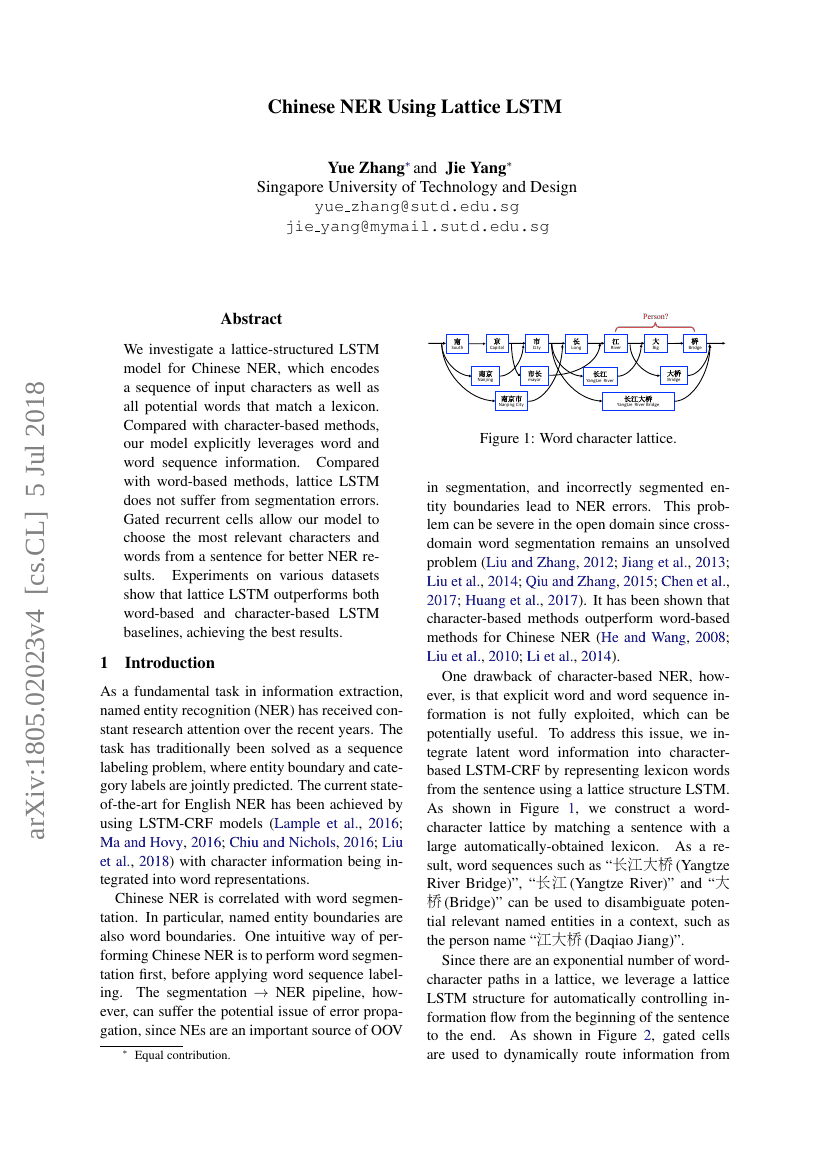Command Palette
Search for a command to run...
Yue Zhang; Jie Yang

Abstract
We investigate a lattice-structured LSTM model for Chinese NER, which encodes a sequence of input characters as well as all potential words that match a lexicon. Compared with character-based methods, our model explicitly leverages word and word sequence information. Compared with word-based methods, lattice LSTM does not suffer from segmentation errors. Gated recurrent cells allow our model to choose the most relevant characters and words from a sentence for better NER results. Experiments on various datasets show that lattice LSTM outperforms both word-based and character-based LSTM baselines, achieving the best results.
Code Repositories
Benchmarks
| Benchmark | Methodology | Metrics |
|---|---|---|
| chinese-named-entity-recognition-on-msra | Lattice | F1: 93.18 |
| chinese-named-entity-recognition-on-ontonotes | Lattice | F1: 73.88 |
| chinese-named-entity-recognition-on-resume | Lattice | F1: 94.46 |
| chinese-named-entity-recognition-on-weibo-ner | Lattice | F1: 58.79 |
Build AI with AI
From idea to launch — accelerate your AI development with free AI co-coding, out-of-the-box environment and best price of GPUs.